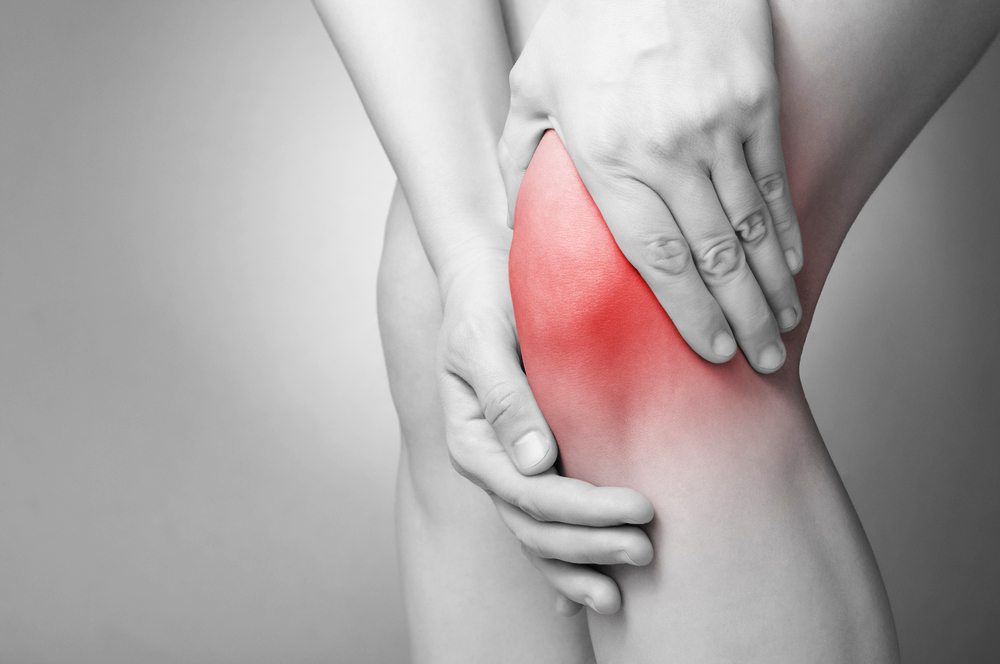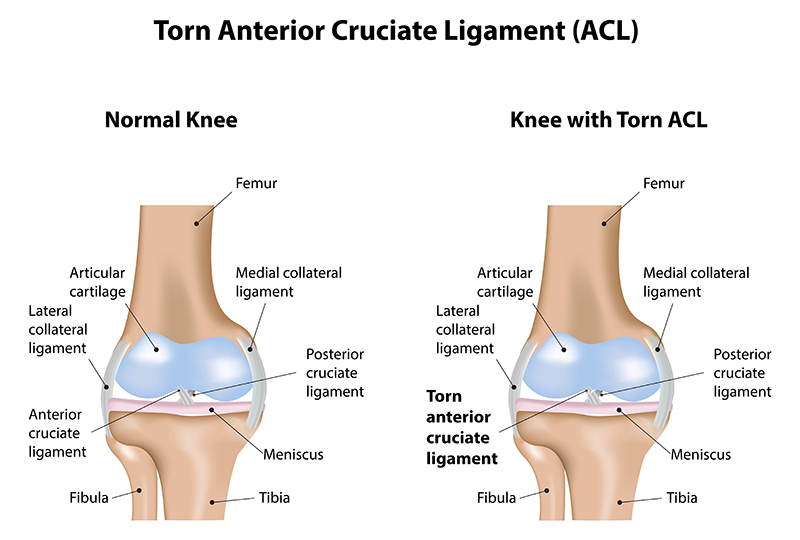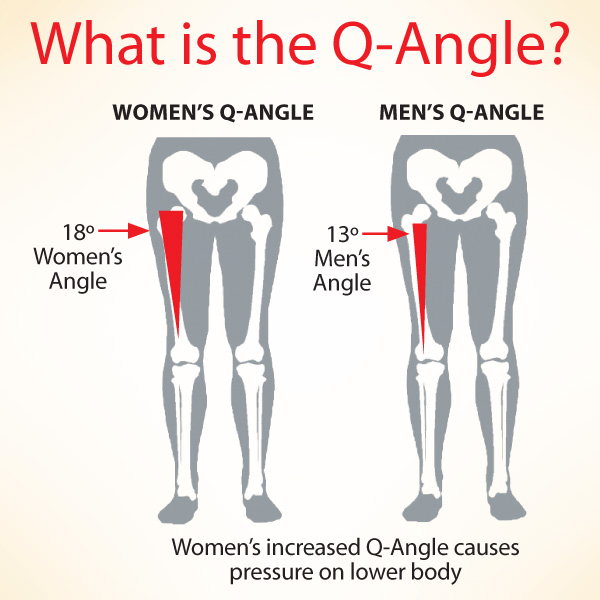Knee Injuries: More Common in Women?

Knee injuries are no laughing matter; 55% of all sports related injuries are knee injuries. But who is at greatest risk for knee injuries when it comes to sports? It turns out that women are 4-6 times more likely to suffer a sports related injury than their male counterparts in the same sport. Out of all sports related injuries, the most common injuries among female athletes are anterior cruciate ligament (ACL) injuries.
The reasons for women having an increased risk of knee injury has nothing to do with strength or ability; it comes down to genetics and anatomical factors, form, and training. Simply put, women are built differently than men and some of those differences put added pressure on their knee joints. Thankfully, the factors contributing to the increase in injuries have been widely researched and while genetics can't be changed, form corrections and training programs have been proven to prevent knee injuries in women's sports.
Within the sports community, female athletes who play basketball and soccer are somewhere between 2-10 times more likely to suffer an ACL injury compared with male athletes, according to the American Orthopaedic Society for Sports Medicine. The reason for the high rate of ACL injuries within these particular sports can be attributed to that most ACL injuries—whether in male or female athletes— are caused by non contact mechanisms. These include common movements like landing from a jump or making a lateral pivot while running. But why are women so susceptible to ACL injuries? Let's take a look at the factors and what can be done to reduce the risk.
Genetic and Anatomical Factors:

The anterior cruciate ligament, or ACL, is one of the four major ligaments of the knee. It connects the front of the tibia (shinbone) with the back of the femur (thighbone). It helps provide stability to the knee joint.
The strength and use of the surrounding muscle groups, such as quadriceps and hamstrings, have a serious impact on the ACL. When running and jumping, women tend to lead with their quads, whereas male athletes seem to have a better balance between the quads and the hamstring muscles. A balance between quads and hamstrings means the impact is more evenly distributed, thus reducing the pressure on the knee.
Another reason for increased knee pressure is that women have a wider pelvis which creates a larger Q-angle at the knee. This often results in a more “knock-kneed” posture in women, leaving the ACL more vulnerable for injury.

(image via http://blog.footsmart.com)
Additional anatomical factors in ACL tears such as the diameter of the ACL are still being researched.
Some doctors think women are more prone an ACL injury because of the differences in the amount of circulating hormones such as estrogen. Certain hormones give ligaments strength and flexibility. Fluctuations in hormone levels may have some impact on the function of the nerves and muscles and may lead to an increased risk of injury.
Form:
When researchers at the Loyola University Medical Center sought to explain why this increased risk of ACL injuries in women was occurring, they uncovered that poor form when landing a jump contributed to the risk.
“Women tend to land with the knees straighter and feet rotated inwards, compared to men who tend to land with more of a bend in the knee and the feet rotated slightly outward,” says Dr. Patrick McCulloch, an orthopedic surgeon with the Methodist Center for Sports Medicine in Houston who was involved in the research. “This puts the knee in a better position to absorb shock.”
After this discovery, the same researchers spent six weeks correcting these form issues resulted in a reduction in the likelihood of ACL injury by up to 50%.
Prevention Through Training:
As doctors and orthopedic surgeons were seeing an increase in ACL injuries in women, training and conditioning programs were designed to correct problems with form, strengthen knees and surrounding muscles and reduce the risk of injury. FIFA, the governing body of the World Cup and other international soccer tournaments, has designed a warm up program specifically designed to reduce the rate of ACL injuries in soccer players (male and female).
Teams that perform FIFA 11+ program at least twice a week, for 20 minutes at time, experience 30-50% fewer injured players, according to FIFA.
In addition, the Sports Physical Therapy department at Massachusetts General Hospital have put together a detailed sports conditioning program to help increase knee strength and reduce knee injuries specifically in female athletes through active warm-up, stretching, strengthening exercises, plyometric drills, and agility drills.
While ACL injuries for female athletes were reaching epidemic proportions, through understanding the problems causing the increase and creating prevention programs based on research, the rate of these injuries is on the decline.
Sources:
http://www.ucsfhealth.org/education/a_females_aching_knees/
http://www.prevention.com/fitness/strength-training/risk-knee-injury-increases-women
http://wcbe.org/post/epidemic-knee-injuries-young-female-athletes
http://www.aaos.org/news/aaosnow/nov10/research3.asp
http://www.athletestrengthandperformance.com/acl-anatomy-gender-disparity/
http://www.ncbi.nlm.nih.gov/pmc/articles/PMC2465242/
http://www.atipt.com/news-media/blog/acl-tears-and-knee-pain-more-common-women-activity




